
The zigzag connection of tranformer is also called the interconnected star connection. This connection has some of the features of the Y and the ∆ connections, combining the advantages of both.
The zigzag transformer contains six coils on three cores. The first coil on each core is connected contrariwise to the second coil on the next core. The second coils are then all tied together to form the neutral and the phases are connected to the primary coils.
Each phase, therefore, couples with each other phase and the voltages cancel out. As such, there would be negligible current through the neutral pole and it can be connected to ground
One coil is the outer coil and the other is the inner coil. Each coil has the same number of windings turns (Turns ratio=1:1) but they are wound in opposite directions.
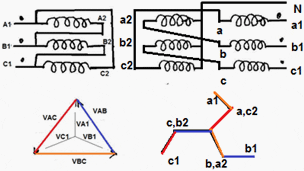
- The outer coil of phase a1-a is connected to the inner coil of phase c2-N
- The outer coil of phase b1-b is connected to the inner coil of phase a2-N
- The outer coil of phase c1-c is connected to the inner coil of phase b2-N
- The inner coils are connected together to form the neutral and our tied to ground
- The outer coils are connected to phases a1,b1,c1 of the existing delta system.
If three currents, equal in magnitude and phase, are applied to the three terminals, the ampere-turns of the a2-N winding cancel the ampere-turns of the b1-b winding, the ampere-turns of the b2-N winding cancel the ampere turns of the c1-c winding, and the ampere-turns of the c2-N winding cancel the ampere turns of the a1-a winding. Therefore, the transformer allows the three in-phase currents to easily flow to neutral.
If three currents, equal in magnitude but 120° out of phase with each other, are applied to the three terminals, the ampere-turns in the windings cannot cancel and the transformer restricts the current flow to the negligible level of magnetizing current. Therefore, the zigzag winding provides an easy path for in-phase currents but does not allow the flow of currents that are 120°out of phase with each other.
Under normal system operation the outer and inner coil winding’s magnetic flux will cancel each other and only negligible current will flow in the in the neutral of the zigzag transformer.
During a phase to ground fault the zig-zag transformer’s coils magnetic flux are no longer equal in the faulted line. This allows zero sequence.
If one phase, or more, faults to earth, the voltage applied to each phase of the transformer is no longer in balance; fluxes in the windings no longer oppose. (Using symmetrical components, this is Ia0 = Ib0 = Ic0.) Zero sequence (earth fault) current exists between the transformers’ neutral to the faulting phase. Hence, the purpose of a zigzag transformer is to provide a return path for earth faults on delta connected systems. With negligible current in the neutral under normal conditions, engineers typically elect to under size the transformer; a short time rating is applied. Ensure the impedance is not too low for the desired fault limiting. Impedance can be added after the secondary’s are summed (the 3Io path)
The neutral formed by the zigzag connection is very stable. Therefore, this type of transformer, or in some cases an auto transformer, lends itself very well for establishing a neutral for an ungrounded 3 phase system.
Many times this type of transformer or auto transformer will carry a fairly large rating, yet physically be relatively small. This particularly applies in connection with grounding applications. The reason for this small size in relation to the nameplate KVA rating is due to the fact that many types of grounding auto transformers are rated for 2 seconds. This is based on the time to operate an over current protection device such as a breaker. Zigzag transformers used to be employed to enable size reductions in drive motor systems due to the stable wave form they present. Other means are now more common, such as 6 phase star.
Advantages of Zig-Zag Transformer
The ∆ -zigzag connection provides the same advantages as the ∆-Y connection.
Less Costly for grounding Purpose
It is typically the least costly than Y-D and Scott Transformer.
Third harmonic suppression
The zigzag connection in power systems to trap triple harmonic (3rd, 9th, 15th, etc.) currents. Here, We install zigzag units near loads that produce large triple harmonic currents. The windings trap the harmonic currents and prevent them from traveling upstream, where they can produce undesirable effects.
Ground current isolation
If we need a neutral for grounding or for supplying single-phase line to neutral loads when working with a 3-wire, ungrounded power system, a zigzag connection may be the better solution. Due to its composition, a zigzag transformer is more effective for grounding purposes because it has less internal winding impedance going to the ground than when using a Star type transformer.
No Phase Displacement
There is no phase angle displacement between the primary and the secondary circuits with this connection; therefore, the ∆-zigzag connection can be used in the same manner as Y-Y and ∆- ∆ transformers without introducing any phase shifts in the circuits.
Application
An Earthing Reference
Occasionally electrical engineers use a combination of YD and zigzag windings to achieve a vector phase shift. For example, an electrical network may have a transmission network of 220 kV/66 kV star/star transformers, with 66 kV/11 kV delta/star for the high voltage distribution network.
If a transformation is required directly between the 220 kV/11 kV network the most obvious option is to use 220 kV/11 kV star/delta. The problem is that the 11 kV delta no longer has an earth reference point.
Installing a zigzag transformer near the secondary side of the 220 kV/11 kV transformer provides the required earth reference point.
As a Grounding Transformer
The ability to provide a path for in-phase currents enables us to use the zigzag connection as a grounding bank, which is one of the main applications for this connection.
We rarely use zigzag configurations for typical industrial or commercial use, because they are more expensive to construct than conventional Star connected transformers. But zigzag connections are useful in special applications where conventional transformer connections aren’t effective.
D or Y / ZigZag are used in unbalanced low voltage system – mostly with single phase appliances

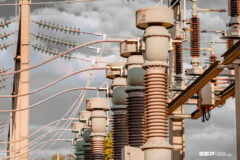
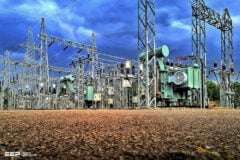
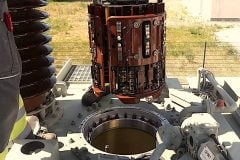
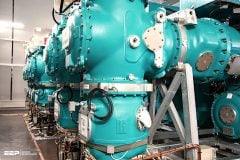
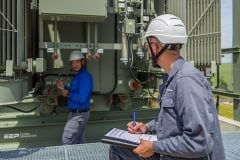
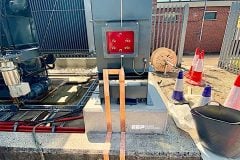




I have a 3-phase, 4-wire system with neutral and ground bonded at the source. The contractor pulled 3 phase conductors and ground to a panelboard that is supposed to be 3-phase, 4-wire. Due to several factors, we would like to derive a neutral from a zig-zag rather than pull neutral from the source. As long as the neutral and ground are not bonded at the zig-zag, I assume that this is acceptable. There is only one separately derived system that originates at the source. The zig-zag should not be bonded to ground since it is not a separately derived system being that it is an auto-transformer with no isolation from the source correct?
Dear sir,
I have searched the web and I could not find any paper which related to Earthing Transformer testing procedures. If you have it, please send one copy to me for reference.
vector diagram of znyn11
Exactly what i needed to know — Thanks
Thanks for sharing the knowledge.
Dear Mr.Jignesh Parmar,
Please clarify the following. The power transformer is with delta-delta DD0 vector group for a 33/11kv class transformer of 4 MVA.. For this if neutral is required we need earthing r=transformer. Can you please explain that earthing transformer with the vector group and how to connect with the main transformer.
regards
VRS
i’d like to know if for example a zigzag transformer use in 20kv system and it’s rating current is 1000 for 30 sec but we use it continually in 45 ampere in neutral so 15 ampere per leg,is it possible or it cause damage to zigzag transfomer
thanks
I like the way we share Engineering knowledge
Now I know something about ZIGZAG Transformer.Thaks
Yzn11, 100 Kva, 20000/ 400 V, Three phase zig zag transformer
what will be the voltage ratio..
Is it 50 or 86.6…pls clarify..
Thank you for the post supported with schemes and practical background.
Thanx for helpful posts,I am very happy to know such things in ur site
How large is a 5Kv, 30Kva Zig Zag transformer? What is the temperature range of the transformer, meaning how hot does it get. Is there an external resister associated with it? I’m not an Engineer.
We have a 13.8kV Primary distribution system receiving power from utility via 138/13.8kV Delta-Wye step down transformers where the 13.8kV wye winding is solidly grounded. The facility is adding generators directly at 13.8kV system and will operate parallel with the utility to reduced the facility demand charge. The 13.8kV system will operate in islanded mode when the utility fails. The (3) generators are between 25MW to 40MW nominal rating with high impedance neutral grounding system ( distribution transformer with secondary resistance) that is intended to limit the SLG fault current to 10A at 13.8kV. We are considering to connect a Zig-Zag transformer with N solidly connected to groundl at the 13.8kV main bus to create a solidly grounded system in island mode of operation.
Any feedback will be appreciated.